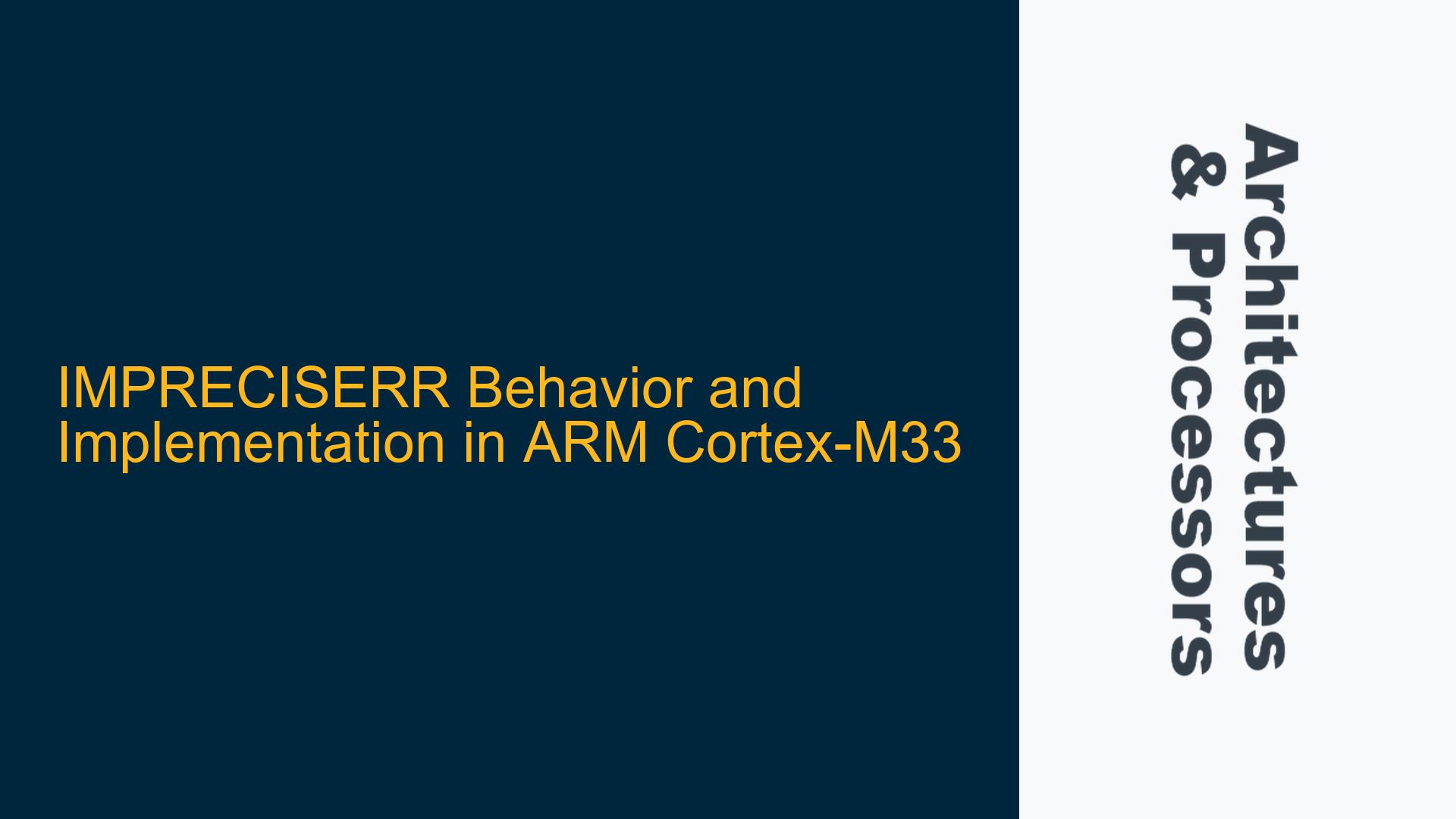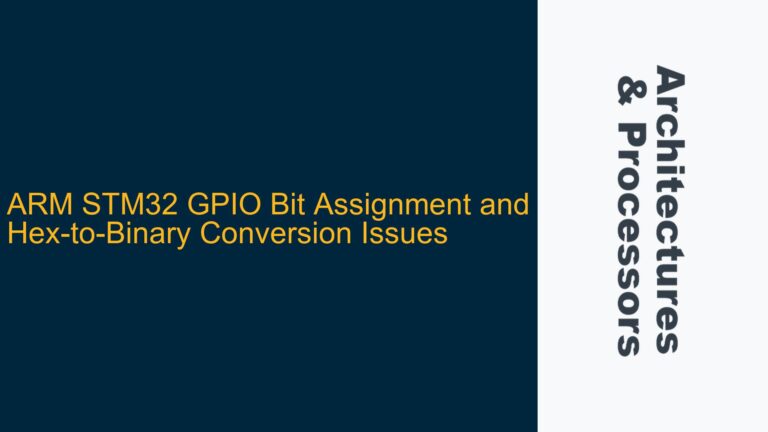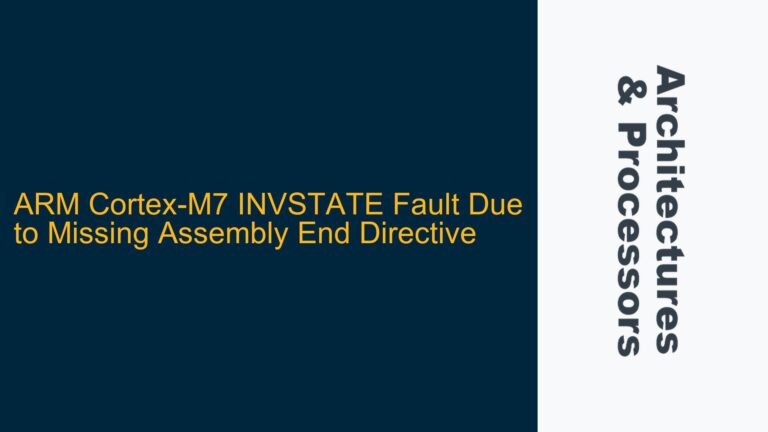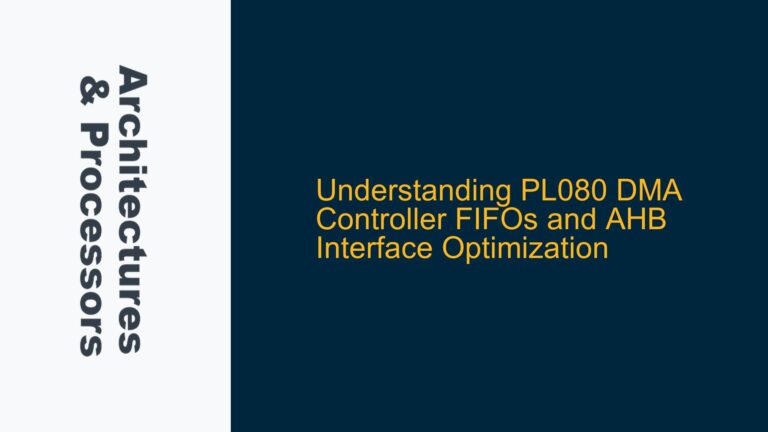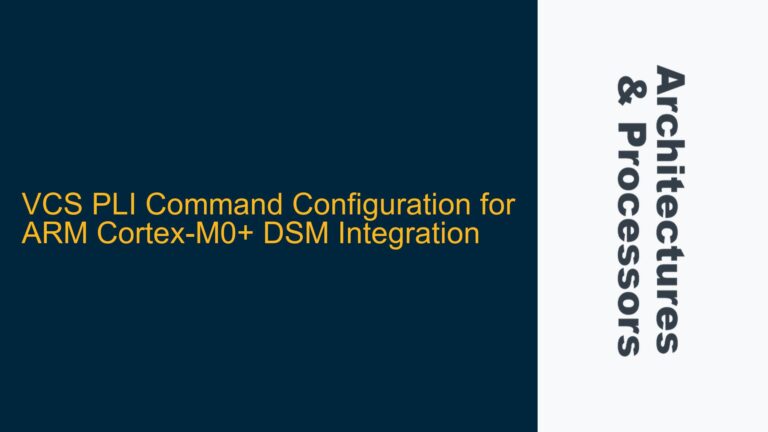ARM Cortex-M33 IMPRECISERR Default Implementation and Documentation Ambiguity
The ARM Cortex-M33 processor, a member of the ARMv8-M architecture, introduces several advanced features, including enhanced fault handling mechanisms. One such mechanism is the IMPRECISERR fault, which is part of the Configurable Fault Status Register (CFSR) within the System Control Block (SCB). The IMPRECISERR fault is specifically related to imprecise data access errors, which occur when a bus error is detected but cannot be precisely attributed to a specific instruction due to the nature of the bus architecture or pipeline behavior.
The ambiguity arises from conflicting information in the ARM Cortex-M33 documentation. On one hand, the Cortex-M33 User Guide states that IMPRECISERR is not implemented by default, implying that it is an optional feature that may or may not be present depending on the specific implementation or configuration of the processor. On the other hand, another section of the same guide references IMPRECISERR in the context of fault handling, suggesting that it is a standard feature.
This discrepancy can lead to confusion for developers who rely on the documentation to understand the fault handling capabilities of the Cortex-M33. The IMPRECISERR fault is particularly important in systems where data integrity is critical, as it allows for the detection of errors that might otherwise go unnoticed. Understanding whether IMPRECISERR is implemented by default is crucial for designing robust fault handling mechanisms and ensuring the reliability of the system.
Memory Architecture and Bus Error Handling in Cortex-M33
To understand the potential causes of the IMPRECISERR ambiguity, it is necessary to delve into the memory architecture and bus error handling mechanisms of the Cortex-M33. The Cortex-M33 features a Harvard architecture with separate buses for instruction and data accesses. This separation allows for concurrent instruction fetches and data operations, improving overall performance. However, it also introduces complexities in error detection and handling, particularly when it comes to bus errors.
Bus errors can occur for various reasons, such as accessing invalid memory addresses, misaligned accesses, or hardware faults. In the Cortex-M33, these errors are typically detected by the Memory Protection Unit (MPU) or the bus infrastructure itself. When a bus error is detected, the processor needs to determine whether the error is precise or imprecise. A precise error is one where the faulting instruction can be identified with certainty, allowing the processor to trigger a precise fault exception. An imprecise error, on the other hand, occurs when the faulting instruction cannot be determined precisely, often due to the pipelined nature of the processor or the use of write buffers.
The IMPRECISERR fault is specifically designed to handle imprecise bus errors. When an imprecise error occurs, the processor sets the IMPRECISERR bit in the CFSR register, indicating that a bus error has been detected but cannot be attributed to a specific instruction. This allows the system to take appropriate action, such as logging the error or triggering a recovery mechanism.
The ambiguity in the documentation likely stems from the fact that the implementation of IMPRECISERR is dependent on the specific configuration of the Cortex-M33. In some configurations, IMPRECISERR may be implemented by default, while in others, it may be optional or even absent. This variability can be influenced by factors such as the presence of a Memory Protection Unit (MPU), the use of write buffers, or the specific bus architecture used in the implementation.
Resolving IMPRECISERR Ambiguity and Ensuring Robust Fault Handling
To resolve the ambiguity surrounding the IMPRECISERR fault in the Cortex-M33, developers should take a systematic approach to understanding the fault handling capabilities of their specific implementation. This involves consulting the technical reference manual (TRM) for the specific Cortex-M33 variant being used, as well as any additional documentation provided by the silicon vendor.
The first step is to verify whether the IMPRECISERR fault is implemented in the specific Cortex-M33 variant being used. This can typically be determined by examining the CFSR register definition in the TRM. If the IMPRECISERR bit is present in the CFSR, it indicates that the fault is implemented. If the bit is absent, it suggests that the fault is not implemented in that particular variant.
Once the presence or absence of IMPRECISERR has been confirmed, developers should ensure that their fault handling mechanisms are designed to account for this. If IMPRECISERR is implemented, the fault handler should include logic to handle imprecise bus errors. This may involve logging the error, triggering a system reset, or taking other appropriate actions depending on the system requirements.
If IMPRECISERR is not implemented, developers should be aware that imprecise bus errors may not be detected by the processor. In such cases, additional measures may be necessary to ensure data integrity, such as implementing software-based checksums or using external hardware to monitor bus activity.
In addition to verifying the implementation of IMPRECISERR, developers should also consider the broader context of fault handling in the Cortex-M33. This includes understanding the role of the MPU in detecting and handling memory access violations, as well as the use of other fault status registers such as the HardFault Status Register (HFSR) and the Debug Fault Status Register (DFSR). A comprehensive understanding of these mechanisms is essential for designing robust and reliable embedded systems.
Finally, developers should be aware that the behavior of the Cortex-M33 may vary depending on the specific silicon implementation. Different vendors may configure the processor differently, leading to variations in fault handling capabilities. As such, it is important to consult the documentation provided by the silicon vendor and, if necessary, reach out to their support teams for clarification.
In conclusion, the ambiguity surrounding the IMPRECISERR fault in the ARM Cortex-M33 highlights the importance of thorough documentation review and a deep understanding of the processor’s fault handling mechanisms. By taking a systematic approach to verifying the implementation of IMPRECISERR and designing robust fault handling mechanisms, developers can ensure the reliability and integrity of their embedded systems.
